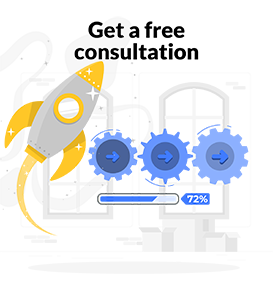Drive More Traffic to Your Website with SEO
Are you looking for ways to drive more traffic to your website? Search engine optimization (SEO) is one of the best tools for getting more people to visit your webpages. When done correctly, SEO can help your pages rank higher in search results and make sure that potential customers find you. But how do you get started? In this blog post, we’ll look at the key elements of SEO and how you can use them to drive more traffic to your website. From choosing the right keywords to optimizing page titles and content, learn how SEO can be a powerful tool for driving more visitors to your website.
What is SEO?
SEO stands for “search engine optimization.” It is the process of getting traffic from the “free,” “organic,” “editorial” or “natural” search results on search engines.
Search engine optimization (SEO) is the practice of improving the ranking of a website on search engines. The higher the ranking, the more likely people are to find the website.
There are two types of SEO: on-page and off-page. On-page SEO refers to factors that have an effect on your website, such as the content, structure, and code. Off-page SEO refers to factors that have an effect on your website’s position in search engine results pages (SERPs).
The goal of SEO is to improve the visibility of a website so that it will appear in SERPs when people search for keywords related to the site. However, SEO is not easy, and it often requires the same dedication as creating any other type of online content.
To learn more about SEO and how to improve your own website’s ranking, check out this comprehensive guide from Moz.
How to Optimize Your Site for SEO
Assuming you have a website and you want people to visit it, you’ll need to engage in some form of digital marketing. Search engine optimization (SEO) is one way to do this, and when done correctly, it can result in more traffic to your site from people using search engines like Google, Yahoo, and Bing.
Here are two tips on how to optimize your site for SEO:
- Do your research. Keyword research is essential for on-page optimization. Chances are you are naturally including keywords without realizing it simply by providing valuable content on a topic. However, there are a variety of tools and techniques for finding related keywords relevant to your website that you may not have considered. The Google Adwords Keyword Tool and SEMrush both offer great tools that allow you to find keywords related to your website and content.
- Use keyword-rich titles and descriptions. When creating titles for your pages or blog posts, include one or two main keywords that describe the page content. These should be included in the title tag of the page as well as the meta description tag. The title tag is the main text that appears in the search engine results pages (SERP), while the meta description is the brief snippet of text that appears below the title on the SERP. Both help tell searchers what your page is about, so be sure to use them wisely! For more tips, make sure to read our blogs.
What Are the Benefits of SEO?
SEO can be a major source of lead generation and increased web traffic for your business. It’s a long-term marketing strategy that, when done correctly, can result in more leads and customers from your website. Here are some benefits of SEO:
- Increased Web Traffic
- More Leads and Customers
- Improved ROI
- Long-Term Results
- Cost-Effective Marketing
How to Get Started with SEO
If you’re running a website, you want people to visit it. That’s a given. But how do you go about getting people to find your site? Search Engine Optimization, or SEO, is the process of improving your website so that it will rank higher in search engine results pages (SERPs). This means that when people search for keywords related to your business, your website will appear closer to the top of the results list. And we all know that the higher up on the page you are, the more likely someone is to click on your link.
There’s a lot that goes into SEO, but there are some easy steps you can take to get started. Just by following these simple tips, you can improve your chances of driving more traffic to your website:
- Do some keyword research – Find out what words and phrases potential customers are using when they search for businesses like yours. Then, make sure those keywords are included in your website content, titles, tags, and descriptions.
- Optimize your site for mobile – More and more people are using their phones and tablets to surf the web. If your site isn’t optimized for mobile devices, you’re missing out on a lot of potential traffic. Make sure your site is responsive and easy to navigate on smaller screens.
- Use social media – Social media platforms can be a great way to connect with potential customers and promote your website. Post interesting content, including links back
What Are the Best Practices for SEO?
SEO is an important tool for driving traffic to your website. There are a number of best practices you can follow to improve your website’s SEO and increase your chances of ranking higher in search engine results pages (SERPs).
Here are some of the best practices for SEO:
- Research keywords and use them strategically throughout your content.
- Optimize your titles and meta descriptions.
- Structure your URLs in a user-friendly way.
- Use alt text to describe images.
- Increase your website’s load speed.
- Create high-quality, original content that provides value to users.
- Promote your content through social media and other channels.
- Monitor your website’s SEO regularly and make changes as needed.
How to Measure the Success of Your SEO Efforts?
There are a number of ways to measure the success of your SEO efforts. The most important metric is organic traffic, which can be measured in your website’s analytics. Other metrics that can be useful include search engine rankings, backlinks, and social media engagement.
Organic traffic is the most important metric to track, as it represents the number of visitors coming to your website from search engines. To increase organic traffic, you need to ensure that your website is appearing as high up in the search results as possible. You can track your progress by monitoring your website’s position in the SERPs (search engine results pages) for relevant keywords over time.
Backlinks are another key metric to track, as they indicate how many other websites are linking to yours. The more backlinks you have, the higher your website will rank in the search results. To increase your backlinks, you can submit your website to directories and create quality content that others will want to link to.
Social media engagement is also a good indicator of SEO success. If people are talking about your website on social media, it means that they’re finding it through search engines. You can track social media engagement by monitoring how often your website is shared or mentioned on social networks such as Twitter and Facebook.
Conclusion
SEO can be a powerful tool when it comes to driving more traffic to your website. By optimizing your website for search engine rankings, you can ensure that you are reaching the right audience and getting in front of potential customers. With the right keywords, content strategy, and link-building tactics, you can start to see results quickly and continue to build momentum with ongoing SEO efforts. Investing in SEO will help bring valuable visitors and leads to your site. So, why not get started today?
Curious about the ins and outs of digital marketing?
Subscribe to our email newsletter for the latest digital marketing insights, and also make sure to read our blogs. See you next time!






